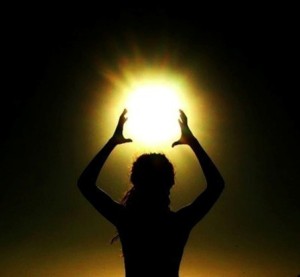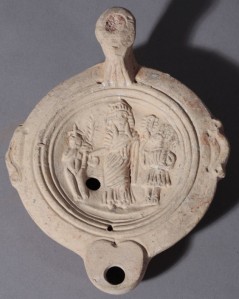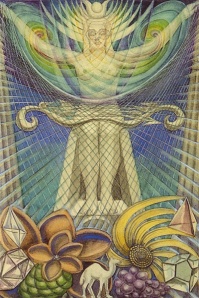 As the days grow longer, a certain soft joy fills me.
As the days grow longer, a certain soft joy fills me.
By no means has winter here in my part of the Pacific Northwest been harsh. Yet I find that the increasing light releases me, urging me to draw in deep breaths that I didn’t even know I longed for.
That is what Light can do.
Many of us have spent so much of our spiritual capital in “accepting our inner darknesses,” that we can forget to take the time to accept our inner illumination as well. If truth be told (and it shall be), it can often be easier to accept the Beautiful Dark than to bathe in the Brilliance of the Light. The Light gives us nowhere to hide. We are ultimately vulnerable before It, obliterated by Its beneficence. Now that’s scary.
 Happily, our Goddess—while She is quite at home in the dark—is also a Lady of Light. And though She is quite capable of obliterating us with beneficence, She can also offer us Her Light as the spring sun offers its warm and persuasive light to the seeds and roots that are just now awakening in the muddy earth.
Happily, our Goddess—while She is quite at home in the dark—is also a Lady of Light. And though She is quite capable of obliterating us with beneficence, She can also offer us Her Light as the spring sun offers its warm and persuasive light to the seeds and roots that are just now awakening in the muddy earth.
Isis is associated with all the heavenly lights—as you likely know. Our Goddess is indeed a Sun Goddess. She is also seen in the light of Her holy star, Sirius, and even in the light of the moon, at least in later periods.

A festival calendar from the temple of Edfu records a summer procession of Isis the Brilliant. During that festival, the image of the radiant Goddess was carried among the people in Her sacred boat, coming to rest in Her boat-sanctuary. There, the calendar text tells us “every kind of good thing is offered to her.” Some modern Kemetic Orthodox groups celebrate this as the Aset Luminous Festival. Participants illuminate paper boats with candles and set them adrift to carry worshippers’ prayers to Isis. In accordance with the ancient traditions, offerings are also given to Isis at this time.
Isis’ temples in Italy may have been particularly well lit. Fifty-eight lamps were found in the temple at Pompeii. In that not-overly-large temple space, that many lamps would have provided a great deal of light. A personal Isis shrine in Pompeii had 20 lamps. Lamps were common votive gifts to Isis as well. In his ancient novel, The Golden Ass, Apuleius describes the lanterns, torches, candles, and “other kinds of artificial light” that were carried in a procession for Isis.

Surely not all of this illumination was purely practical. Indeed, Apuleius notes that the processional lights were symbols of the heavenly light of the stars in the Goddess’ heaven. He also uses many allusions to light and radiance in telling his readers about Isis. For example, the blessings brought by Isis are described as “radiant” (inlustre). The initiating priest in Apuleius’ story says that, unlike blind Fortune, Isis sees and “illumines the other gods too with the radiance of her light.”
It is also possible that Roman-period priests of Isis may have carried lighted lamps about in daylight as a symbol of the spiritual light bestowed by their Goddess. Seneca mentions a “linen-clad old man” (Isian clergy were notorious wearers of linen) who carried around a lighted lamp in broad daylight. J. Gwyn Griffiths, one of my favorite Isis scholars, thinks this may refer to a priest of Isis.
Just as light can literally dispel darkness, it is frequently a symbol of dispelling spiritual darkness. The Light of Isis illuminates the dark corners of our souls and shines light on our paths as we seek to understand the Divine Mystery. With our ancient sisters and brothers—initiates of the Mysteries of Isis—we can understand that the Light of Isis can help us grow in the brilliant Light of Her love, wisdom, and protection.



